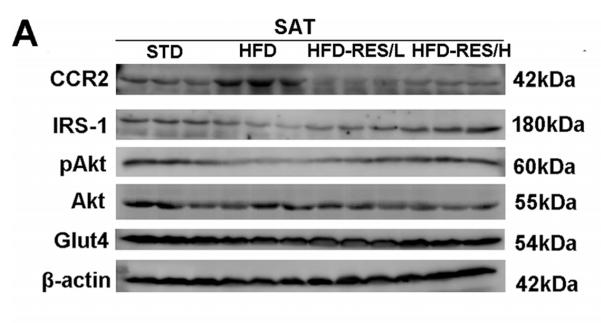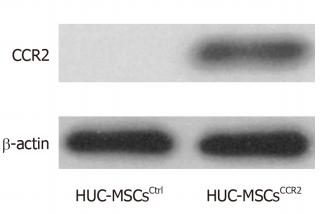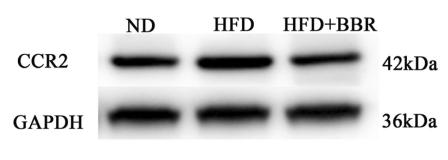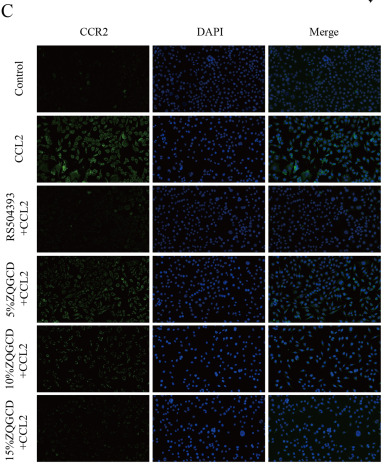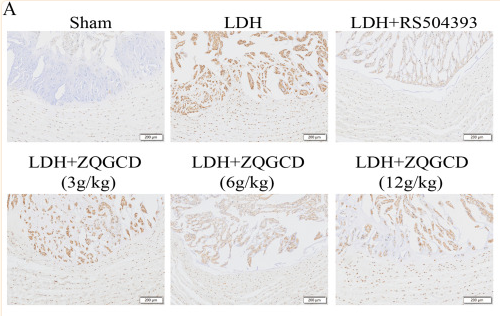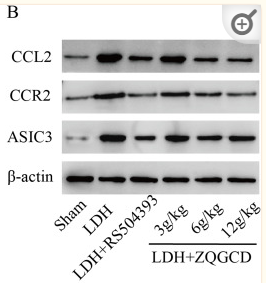CCR2 Antibody - #DF2711
| 製品: | CCR2 Antibody |
| カタログ: | DF2711 |
| タンパク質の説明: | Rabbit polyclonal antibody to CCR2 |
| アプリケーション: | WB IHC |
| Cited expt.: | WB, IHC |
| 反応性: | Human, Mouse, Rat |
| 予測: | Pig, Bovine, Horse, Sheep, Rabbit, Dog |
| 分子量: | 42 kDa,; 42kD(Calculated). |
| ユニプロット: | P41597 |
| RRID: | AB_2839917 |
製品説明
*The optimal dilutions should be determined by the end user. For optimal experimental results, antibody reuse is not recommended.
*Tips:
WB: For western blot detection of denatured protein samples. IHC: For immunohistochemical detection of paraffin sections (IHC-p) or frozen sections (IHC-f) of tissue samples. IF/ICC: For immunofluorescence detection of cell samples. ELISA(peptide): For ELISA detection of antigenic peptide.
引用形式: Affinity Biosciences Cat# DF2711, RRID:AB_2839917.
折りたたみ/展開
C C chemokine receptor type 2; C C CKR 2; C-C chemokine receptor type 2; C-C CKR-2; CC chemokine receptor type 2; CC CKR 2; CC-CKR-2; CCCKR2; CCR 2; CCR-2; CCR1L; CCR2; CCR2_HUMAN; CCR2A; CCR2B; CCR5L; CD192; CD192 antigen; Chemokine C C motif receptor 2; Chemokine CC Motif Receptor 2; CKR 2; CKR2; CKR2A; CKR2B; CMKBR2; MCP 1 R; MCP-1-R; MCP1 RECEPTOR; MCP1R; Monocyte chemoattractant protein 1 receptor; Monocyte Chemotactic Protein 1 Receptor; Monocyte Chemotactic Protein 1 Receptor;
免疫原
A synthesized peptide derived from human CCR2, corresponding to a region within the internal amino acids.
- P41597 CCR2_HUMAN:
- Protein BLAST With
- NCBI/
- ExPASy/
- Uniprot
MLSTSRSRFIRNTNESGEEVTTFFDYDYGAPCHKFDVKQIGAQLLPPLYSLVFIFGFVGNMLVVLILINCKKLKCLTDIYLLNLAISDLLFLITLPLWAHSAANEWVFGNAMCKLFTGLYHIGYFGGIFFIILLTIDRYLAIVHAVFALKARTVTFGVVTSVITWLVAVFASVPGIIFTKCQKEDSVYVCGPYFPRGWNNFHTIMRNILGLVLPLLIMVICYSGILKTLLRCRNEKKRHRAVRVIFTIMIVYFLFWTPYNIVILLNTFQEFFGLSNCESTSQLDQATQVTETLGMTHCCINPIIYAFVGEKFRSLFHIALGCRIAPLQKPVCGGPGVRPGKNVKVTTQGLLDGRGKGKSIGRAPEASLQDKEGA
種類予測
Score>80(red) has high confidence and is suggested to be used for WB detection. *The prediction model is mainly based on the alignment of immunogen sequences, the results are for reference only, not as the basis of quality assurance.
High(score>80) Medium(80>score>50) Low(score<50) No confidence
研究背景
Key functional receptor for CCL2 but can also bind CCL7 and CCL12. Its binding with CCL2 on monocytes and macrophages mediates chemotaxis and migration induction through the activation of the PI3K cascade, the small G protein Rac and lamellipodium protrusion (Probable). Also acts as a receptor for the beta-defensin DEFB106A/DEFB106B. Regulates the expression of T-cell inflammatory cytokines and T-cell differentiation, promoting the differentiation of T-cells into T-helper 17 cells (Th17) during inflammation (By similarity). Facilitates the export of mature thymocytes by enhancing directional movement of thymocytes to sphingosine-1-phosphate stimulation and up-regulation of S1P1R expression; signals through the JAK-STAT pathway to regulate FOXO1 activity leading to an increased expression of S1P1R (By similarity). Plays an important role in mediating peripheral nerve injury-induced neuropathic pain (By similarity). Increases NMDA-mediated synaptic transmission in both dopamine D1 and D2 receptor-containing neurons, which may be caused by MAPK/ERK-dependent phosphorylation of GRIN2B/NMDAR2B (By similarity). Mediates the recruitment of macrophages and monocytes to the injury site following brain injury (By similarity).
(Microbial infection) Alternative coreceptor with CD4 for HIV-1 infection.
N-glycosylated.
Sulfation increases the affinity for both monomeric and dimeric CCL2 with stronger binding to the monomeric form. Binding of sulfated CCR2 to CCL2 promotes conversion of CCL2 from dimer to monomer.
Cell membrane>Multi-pass membrane protein.
Note: The chemoattractant receptors are distributed throughout the cell surface; after stimulation with a ligand, such as CCL2, they are rapidly recruited into microdomain clusters at the cell membrane.
Expressed by monocytes and IL2-activated NK cells.
Belongs to the G-protein coupled receptor 1 family.
研究領域
· Environmental Information Processing > Signaling molecules and interaction > Cytokine-cytokine receptor interaction. (View pathway)
· Organismal Systems > Immune system > Chemokine signaling pathway. (View pathway)
参考文献
Application: WB Species: Rat Sample: liver tissues
Application: IF/ICC Species: Rat Sample:
Application: IHC Species: Rat Sample:
Application: WB Species: Rat Sample:
Application: WB Species: human Sample: HUC-MSCsCtrlvs HUC-MSCsCCR2
Application: WB Species: rat Sample: liver
Application: WB Species: rat Sample: liver
Application: WB Species: mouse Sample: SAT(subcutaneous adiposet issue)
Restrictive clause
Affinity Biosciences tests all products strictly. Citations are provided as a resource for additional applications that have not been validated by Affinity Biosciences. Please choose the appropriate format for each application and consult Materials and Methods sections for additional details about the use of any product in these publications.
For Research Use Only.
Not for use in diagnostic or therapeutic procedures. Not for resale. Not for distribution without written consent. Affinity Biosciences will not be held responsible for patent infringement or other violations that may occur with the use of our products. Affinity Biosciences, Affinity Biosciences Logo and all other trademarks are the property of Affinity Biosciences LTD.




















